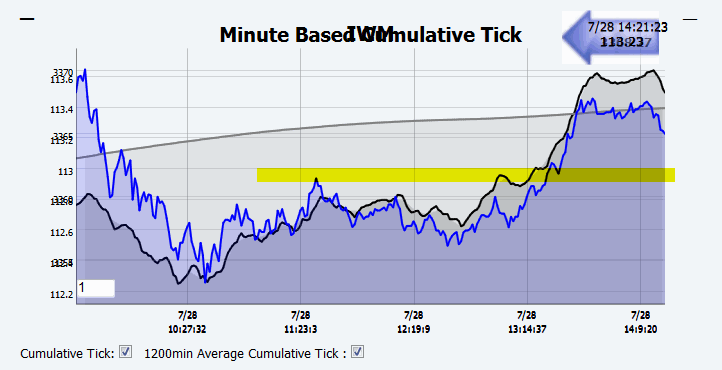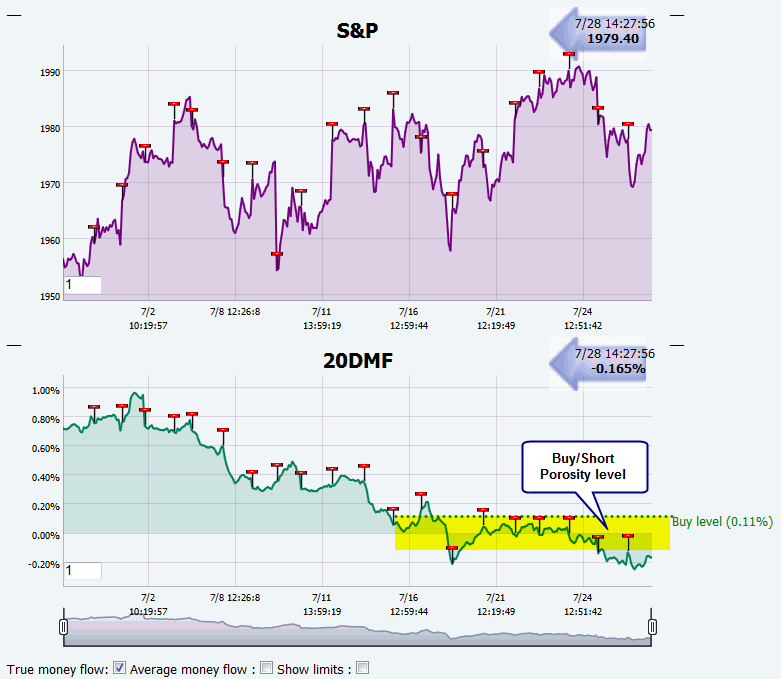-
Bottom Reversal
Today, we experienced a bottom reversal. This probably indicates that investors are bullish for the next three days, which correspond to the FOMC announcement combined to the now traditional end of the Month reverse repo.
We can see below that IWM has followed the Cumulative Tick today. The reverse repo almost guarantees that the CTick will be positive in the next days.
The best price to buy IWM is just below 113, which is the 200MA. (This corresponds to TNA at around 70.10 to 70.20)
The idea is to short the bounce on July 31 or Aug 1.
We can see on a 20D scale that the 20DMF is not collapsing. It is still very close to its Buy/Sell porosity level. This makes it very hard to trade with conviction.
Pascal


-
1st Day of the Month Stats
Hi Pascal,
Your note caused me to go research "reverse repo's" - sounds like this new program will give the US Fed more control overnight/short term money market interest rates - that broken down so badly during Fall 2008. And, the Fed will have more control to raise interest on that end of the yield curve when they want to, e.g. if inflation starts to rip.
I am not sure how the end of month reverse repo's tie to positive cumulative tick values?
You noted that you are eyeing Jul 13 and Aug 1 for possible trading.
I recently looked at the 1st day of the month statistics on QQQ over the last 10 years. The win rate is about 2/3 and avg gain is +0.2% from close on last day of previous month to close on 1st day of the month. There are other studies on the internet confirming, giving more data, and explaining this seasonality. I believe its one of the stronger/valid seasonality statistics.
Shawn
-
In a repo, teh Fed drains short-term liquidity. In a revrese-repo, it offers short-term liquidity.
This helps banks in the short-term (1 to 3 days).
I am not sure how the mechanism works to funel liquidity from there to the stock market, but I believe that if a bank has more liquidity, it can also offer short-term credit lines to a few hedge funds or to its proprietary trading desks (if they still exist.)
Pascal
 Posting Permissions
Posting Permissions
- You may not post new threads
- You may not post replies
- You may not post attachments
- You may not edit your posts
Forum Rules





 Reply With Quote
Reply With Quote